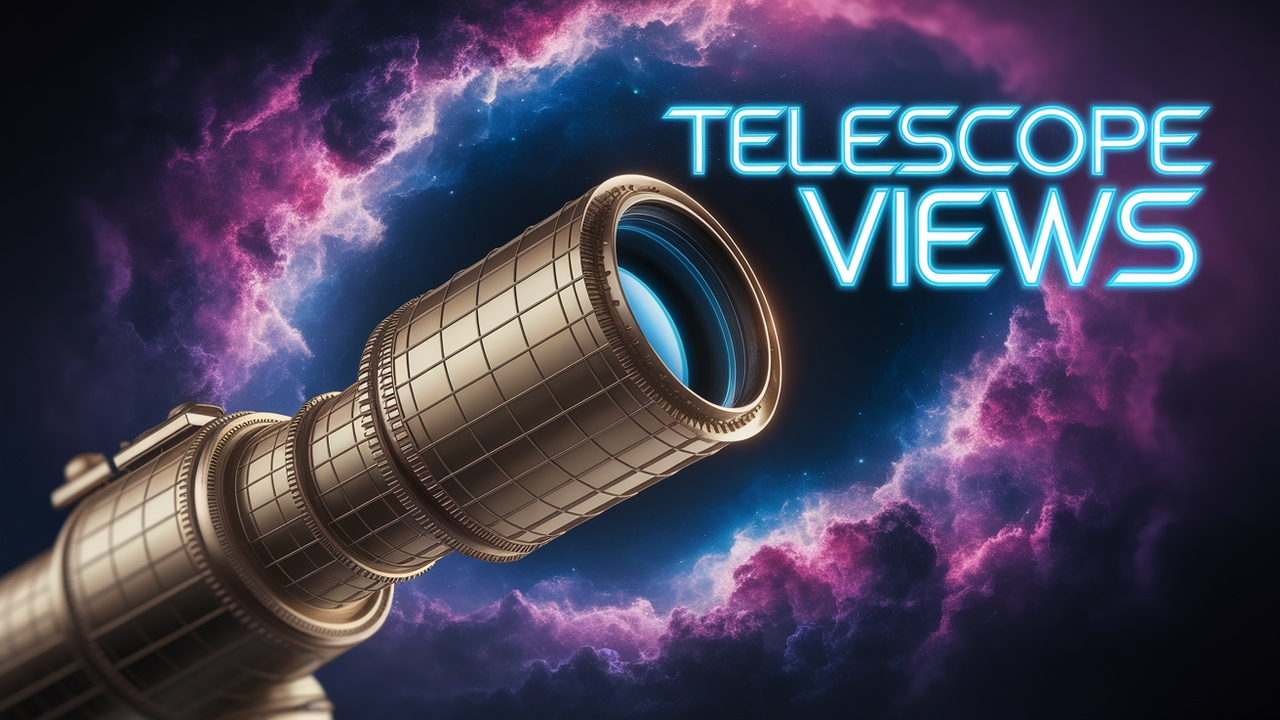
This course delves into the fascinating world of space telescopes, exploring their design, operation, and the groundbreaking discoveries they facilitate. Students will gain a deep understanding of various types of space telescopes, their contributions to astronomy, and the future of space observation.
Course Levels
-
Level 1: Introduction to Space Telescopes
This level introduces the fundamental concepts of space telescopes, including their purpose and basic functioning.
-
Level 2: Types of Space Telescopes
In this level, students will explore the different types of space telescopes and their specific applications in astronomy.
-
Level 3: Notable Space Telescopes
This level covers significant space telescopes that have revolutionized our understanding of the universe.
-
Level 4: The Science Behind Space Telescopes
Students will learn about the scientific principles and technologies that enable space telescopes to function effectively.
-
Level 5: Observational Astronomy with Space Telescopes
This level focuses on how astronomers use data from space telescopes to study celestial phenomena.
-
Level 6: Future of Space Telescopes
Students will explore upcoming missions and technologies that will shape the future of space observation.
Course Topics
-
International Collaborations in Space Research
# International Collaborations in Space Research Space research has evolved into a complex, interdisciplinary field that requires international cooperation to tackle the challenges of exploring the u...
-
Basic Components of Space Telescopes
# Basic Components of Space Telescopes Space telescopes are sophisticated instruments that allow astronomers to observe celestial objects from outside the Earth’s atmosphere. This unique vantage poin...
-
X-ray Telescopes
# X-ray Telescopes X-ray telescopes are specialized instruments designed to observe the universe in the X-ray portion of the electromagnetic spectrum, which ranges from 0.01 to 10 nanometers in wavel...
-
Challenges of Operating in Space
# Challenges of Operating in Space Operating space telescopes presents a unique set of challenges that must be overcome to ensure successful missions. These challenges stem from the extreme environme...
-
The Role of Artificial Intelligence in Astronomy
# The Role of Artificial Intelligence in Astronomy Artificial Intelligence (AI) is revolutionizing many fields, and astronomy is no exception. As we venture further into the cosmos, the vast amounts ...
-
Stellar Formation and Evolution
# Stellar Formation and Evolution Stellar formation and evolution are fundamental concepts in observational astronomy, providing insights into the lifecycle of stars and their roles in the universe. ...
-
Exoplanets and Their Systems
# Exoplanets and Their Systems ## Introduction to Exoplanets Exoplanets, or extrasolar planets, are planets that orbit stars outside our solar system. Since the first confirmed discovery of an exopla...
-
Galaxies and Their Structures
# Galaxies and Their Structures Galaxies are vast systems of stars, stellar remnants, interstellar gas, dust, and dark matter, bound together by gravity. Understanding the structure and classificatio...
-
Optics and Image Processing
# Optics and Image Processing Optics is a fundamental aspect of space telescopes, enabling them to capture and magnify light from distant celestial objects. Understanding how light interacts with len...
-
Data Collection and Transmission
# Data Collection and Transmission Data collection and transmission are critical processes in the operation of space telescopes. These processes involve gathering astronomical data and efficiently se...
-
James Webb Space Telescope
# James Webb Space Telescope The James Webb Space Telescope (JWST) is one of the most sophisticated space telescopes ever built, designed to succeed the Hubble Space Telescope. Launched on December 2...
-
Spitzer Space Telescope
# Spitzer Space Telescope The Spitzer Space Telescope, launched on August 25, 2003, was the fourth and final mission in NASA's Great Observatories program, which also includes the Hubble Space Telesc...
-
Cosmic Microwave Background Radiation
# Cosmic Microwave Background Radiation The Cosmic Microwave Background Radiation (CMB) is a critical piece of evidence for the Big Bang theory and serves as a cornerstone of observational cosmology....
-
Chandra X-ray Observatory
# Chandra X-ray Observatory The Chandra X-ray Observatory is one of NASA's flagship space telescopes, launched on July 23, 1999. Named after the Indian-American astrophysicist Subrahmanyan Chandrasek...
-
How Telescopes Gather Light
# How Telescopes Gather Light Telescopes are essential tools in astronomy, allowing us to observe celestial objects that are far too faint to see with the naked eye. The fundamental principle behind ...
-
Ethical Considerations in Space Exploration
# Ethical Considerations in Space Exploration Space exploration has progressed significantly over the past few decades, leading to remarkable discoveries and technological advancements. However, with...
-
What is a Space Telescope?
# Introduction to Space Telescopes Space telescopes are astronomical instruments that are placed in orbit around the Earth or other celestial bodies, designed to observe distant astronomical objects ...
-
Hubble Space Telescope
# Hubble Space Telescope The Hubble Space Telescope (HST) is one of the most significant astronomical instruments ever created. Launched in 1990, HST has transformed our understanding of the universe...
-
History of Space Telescopes
# History of Space Telescopes Space telescopes have revolutionized our understanding of the universe by providing clear, unobstructed views of celestial bodies without the interference of Earth's atm...
-
Dark Matter and Dark Energy Research
# Dark Matter and Dark Energy Research Dark matter and dark energy are two of the most intriguing and elusive components of our universe, accounting for approximately 27% and 68% of the universe's to...
- And 10 more topics...